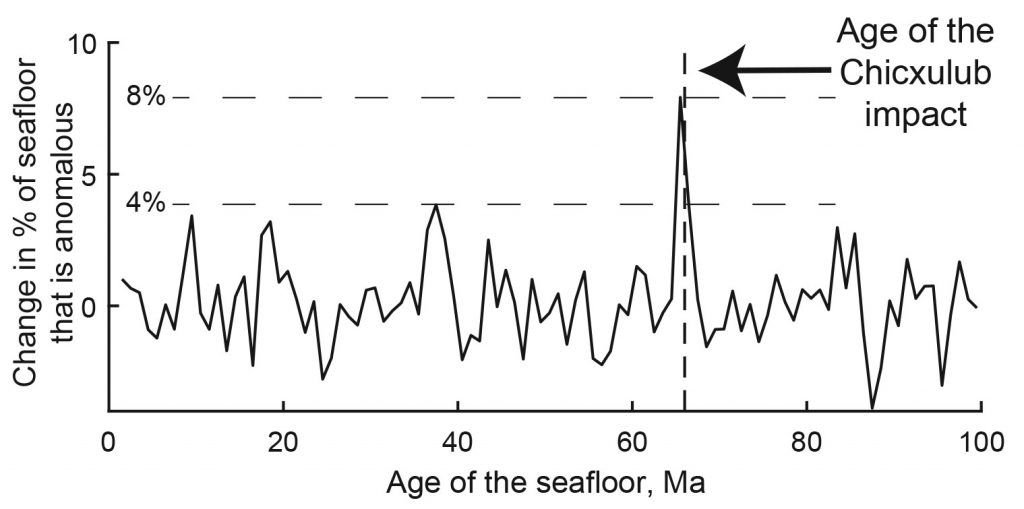by Joseph Byrnes, Postdoctoral researcher at the University of Minnesota
Leif Karlstrom and I are happy to have our paper on the triggering of mid-ocean ridges published in Science Advances. We found a concentration of gravity anomalies (i.e., regions with a very slightly higher force of gravity caused by extra mass at or below Earth’s surface) on K-Pg aged seafloor in the Indian and Pacific Oceans. The simplest explanation is the eruption of ~200 m of excess basalt approximately 66 million years ago. Extending this value globally, the volume of the excess erupted material is at least several hundred thousands cubic kilometers, and could be as large as several million cubic kilometers.

Based on the age of seafloor where we observe the anomaly and the lack of a similar episode in the last 100 Myr, we think the best explanation is the triggering of magmatism by the Chicxulub impact. Seismic waves from the impact appear capable of liberating the melt stored at mantle depths beneath mid-ocean ridges. This is similar to the proposed triggering of the largest eruptions in the Deccan Traps, and represents yet another line of evidence supporting the idea that the Chicxulub meteor impact dramatically affected not just life on Earth, but Earth’s geological activity as well.
Take a look at the abstract for details.
